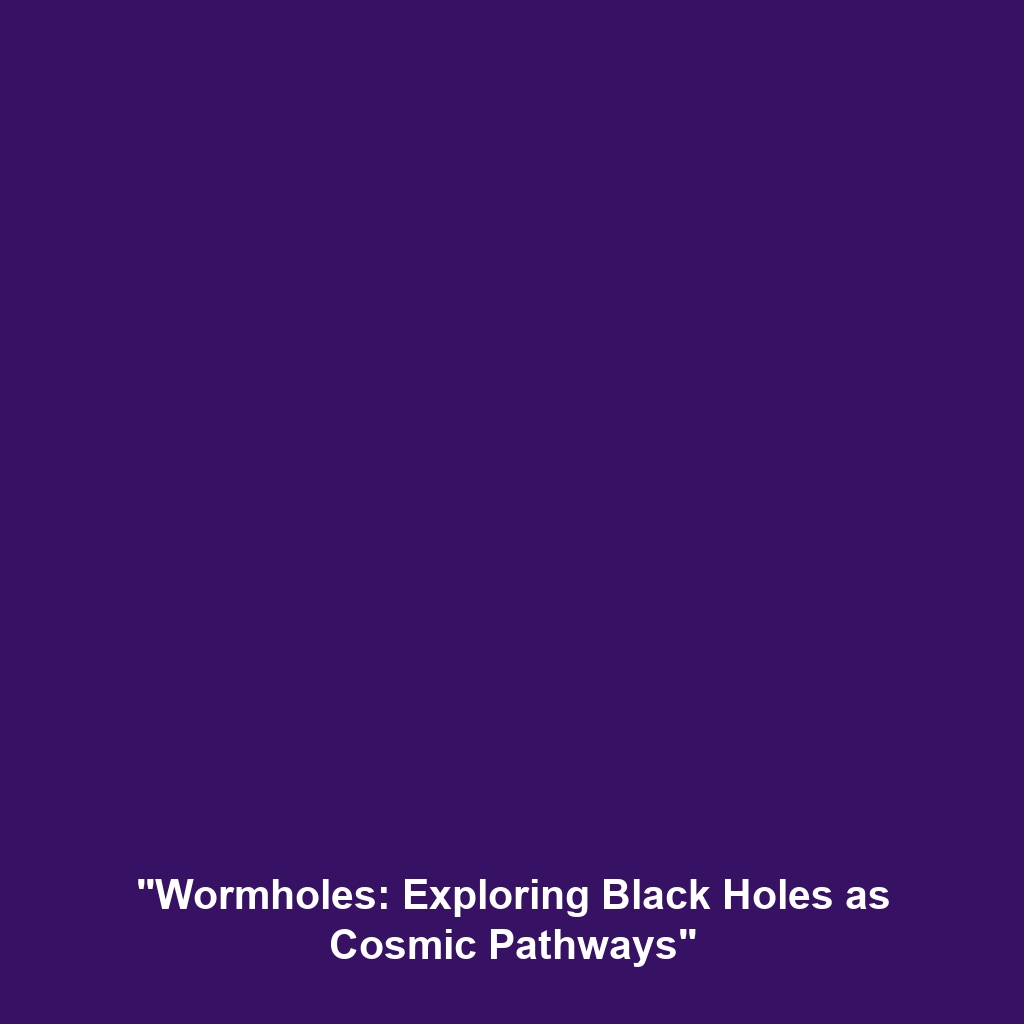Wormholes: The Theoretical Possibility of Black Holes Acting as Bridges to Other Points in Spacetime
Introduction
Wormholes have long captured the imagination of scientists and enthusiasts alike, serving as fascinating theoretical constructs that suggest black holes could function as bridges to other points in spacetime. The significance of studying wormholes lies not only in their potential to revolutionize our understanding of the universe but also in their implications for faster-than-light travel and interstellar exploration. As we delve into the intricate relationship between wormholes and black holes, we uncover profound insights into the fabric of the cosmos.
Key Concepts
Understanding Wormholes
A wormhole, often depicted as a tunnel-like structure connecting disparate regions of spacetime, arises from solutions to Einstein’s field equations in general relativity. There are several types of wormholes, with the most commonly discussed being the Schwarzschild wormhole, also known as the Einstein-Rosen bridge. This theoretical model posits that black holes could serve as entrances to these bridges, potentially connecting distant parts of the universe or even different universes altogether.
Black Holes and Spacetime Curvature
Black holes are regions in space where gravity is so strong that nothing, not even light, can escape from them. The intense curvature of spacetime around a black hole creates unique phenomena, and wormholes could theoretically exploit this curvature to enable shortcuts through spacetime. Understanding both black holes and wormholes is pivotal in modern cosmology, as they challenge our comprehension of physics and the universe’s structure.
Applications and Real-World Uses
While still firmly in the realm of theoretical physics, understanding wormholes provides avenues for speculative applications. For example, the concept of a wormhole could inform advancements in quantum computing and information theory, particularly in understanding data transmission over vast distances. Applications of wormholes in black hole research might also influence how we perceive travel across the cosmos, hinting at the potential for future technologies that could harness these concepts for practical use.
Current Challenges
Despite the intriguing nature of wormholes, several challenges complicate their study and application:
- Existence and Verification: There is currently no experimental evidence that wormholes exist, making them purely theoretical constructs.
- Stability Issues: Theoretical models suggest that wormholes may be unstable and could collapse upon the slightest perturbation.
- Energy Requirements: The energy needed to create or maintain a stable wormhole is beyond our current technological abilities.
Future Research and Innovations
The future of wormhole research hinges on advancements in theoretical physics, including quantum gravity and string theory. Innovations in observational technology, such as enhanced space telescopes and particle accelerators, could provide deeper insights into black holes and hints toward the existence of wormholes. Upcoming research may focus on understanding the fundamental properties of spacetime and exploring the implications of wormhole theory for unified theories of physics.
Conclusion
In conclusion, the theoretical possibility of wormholes acting as bridges to other points in spacetime presents a captivating intersection of physics and philosophy. As we continue to explore the complex nature of black holes and their potential connections, it is crucial to encourage further research and dialogue within the scientific community. For more insights into the mysteries of spacetime, check out our related articles on black holes and quantum physics.

Leave a Reply